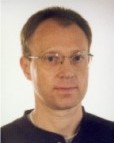The major project during the past decade was the development of pn-CCDs for ESA's XMM-Newton X-ray satellite. Compared to conventional CCDs the pn-CCD has a higher quantum efficiency by full depletion, a higher count rate capability by parallel readout, and a higher radiation tolerance by avoidance of active MOS structures and backside illumination. Since its launch in December 1999 XMM-Newton has performed more than 2.000 scientific observations. The principle and performance of the pn-CCD will be presented as well as exemplary observations and scientific highlights of the XMM-Newton mission.
Derived from the XMM-Newton experience an advanced version of the pn-CCD with frame store area is in development for the German project ROSITA (RÖntgen Survey with an Imaging Telescope Array). The ROSITA telescope is proposed to be placed on a science platform of the International Space Station to perform an all-sky survey in the X?ray energy band 100 eV - 30 keV.
The X-ray Evolving Universe Spectroscopy (XEUS) mission is currently under study by ESA as a potential follow-up mission of XMM-Newton. The major characteristic of XEUS will be the enormous collecting area, up to a factor 100 larger than XMM-Newton. The proportionate increase in photon flux requires the application of a new detector technology, as CCDs have an intrinsic rate limitation imposed by the principle of charge transfer. Therefore the investigation of the concept of an Active Pixel Sensor (APS) with each pixel having its own integrated amplifier has been initiated. The device is based on the DEPFET (Depleted P-channel Field Effect Transistor), a monolithic detector-preamplifier structure allowing the repetitive non-destructive readout of the signal.
MPI Halbleiterlabor
Otto-Hahn-Ring 6
81739 München
Germany
Tel: ++49.+89.83940051
Fax: ++49.+89.83940011
Email: Peter.Lechner@hll.mpg.de
WWW: http://www.hll.mpg.de
